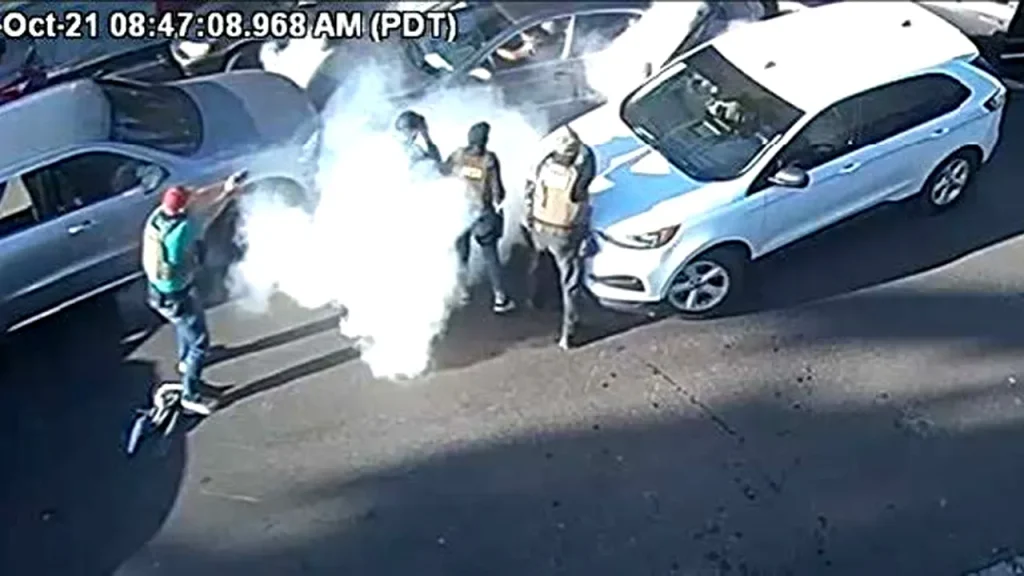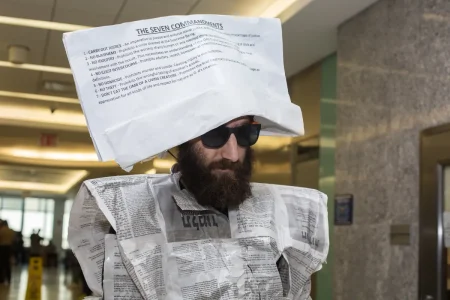ICE Officers Face Rising Violence in Southern California Amid Immigration Tensions
In recent weeks, two alarming incidents involving U.S. Immigration and Customs Enforcement (ICE) officers in Southern California have highlighted an increasingly dangerous environment for federal agents enforcing immigration laws. According to Department of Homeland Security Assistant Secretary Tricia McLaughlin, ICE officers are facing unprecedented levels of aggression, with assault attempts against agents increasing by a staggering 1,000% and death threats soaring by 8,000%. This escalation in hostility comes amid heightened political tensions surrounding immigration enforcement policies and growing efforts by activists to monitor and disrupt ICE operations.
The most recent confrontation occurred in Ontario, California, where an unidentified individual attempted to use their vehicle as a weapon against ICE officers. According to McLaughlin’s statement to Fox News Digital, the driver initially pulled in front of the officers and, after being ordered to leave, reversed directly toward them at speed. Fearing for his life, one officer discharged his weapon at the vehicle, which subsequently fled the scene. This incident demonstrates the split-second, life-or-death decisions ICE agents increasingly face in the field, where ordinary traffic encounters can rapidly escalate into potentially deadly confrontations. The department has emphasized that anyone who “assaults, impedes, obstructs, or threatens the lives of federal officers will be arrested and prosecuted to the fullest extent of the law.”
Just ten days earlier, on October 21, another violent encounter unfolded in Los Angeles involving a TikTok influencer identified as Carlito Ricardo Parias, who is reportedly in the country illegally. According to DHS officials, Parias attempted to ram his vehicle into a law enforcement vehicle, prompting ICE officers to fire shots. Parias was struck in the elbow, while a U.S. Marshals officer sustained a hand injury from a ricochet bullet. Both individuals were reported to be in stable condition following the incident. Federal authorities are now pursuing charges against Parias for allegedly assaulting, resisting, or impeding federal law enforcement. What makes this case particularly concerning is that Parias, known online by various aliases including “Tiktokquero” and “El Señor Richard,” had reportedly been tracking ICE agents for months prior to his arrest, using social media platforms to monitor and potentially interfere with immigration enforcement operations.
The targeting of ICE officers has taken on a more organized dimension, with some activists and local politicians establishing systems to track agent movements. This development has drawn sharp criticism from Attorney General Pam Bondi, who specifically called out Democratic officials in Los Angeles, including Mayor Karen Bass. Bondi accused certain lawmakers, specifically mentioning Representative Robert Garcia and Senator Richard Blumenthal, of putting ICE agents at risk “just for doing their jobs.” Her statement underscores the politically charged nature of immigration enforcement, where the actions of federal agents have become a focal point in broader debates about immigration policy. “The Justice Department has ZERO tolerance for violence against law enforcement,” Bondi asserted, promising prosecution for anyone who physically assaults federal agents.
These incidents reflect a troubling evolution in the challenges facing immigration enforcement officers. Beyond the immediate physical dangers, ICE agents must now contend with being filmed, followed, and having their operations disrupted by individuals seeking to obstruct their duties. The use of social media platforms like TikTok to track and potentially ambush officers represents a new frontier in the already complex landscape of immigration enforcement. Officials express concern that such targeting not only endangers the officers themselves but also compromises their ability to carry out lawful enforcement actions, potentially allowing individuals with criminal records or deportation orders to evade authorities. The Department of Homeland Security has emphasized that despite these challenges, ICE will continue to fulfill its mission to enforce immigration laws while adapting to these emerging threats.
The escalating violence against ICE officers takes place against the backdrop of intensifying national debate over immigration policy and enforcement priorities. Critics of aggressive immigration enforcement argue that ICE operations can create fear in immigrant communities and separate families, while supporters maintain that the agency plays a crucial role in maintaining border security and removing individuals who pose threats to public safety. Regardless of one’s position on immigration policy, however, the physical targeting of federal officers represents a dangerous development that threatens the rule of law. As McLaughlin stated in her appeal for de-escalation: “This violence must end.” The challenge moving forward will be finding ways to address legitimate concerns about immigration enforcement while ensuring that those tasked with enforcing the law can do so without fear of being assaulted or killed in the line of duty.











